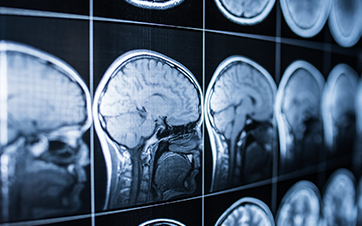
The good news is that 40% of survivors make a full recovery. Everyone's journey looks different. However, there are 10 stages that medical professionals abide by to track a patient's progress.
This article covers the 10 stages of brain injury recovery. Read on to discover more about brain injury aftercare and what to expect.
Stage 1: Coma
Brain injuries can be a result of brain cancer, brain aneurysm, or traumatic accident. A coma is the first stage of recovery, which allows the brain to begin the healing process. A coma can be a direct result of brain injury or medically induced.
This allows medical professionals to minimize swelling and pressure in the brain. Comatose patients are unresponsive, and you may notice that they have no eye movement. Comas, following a brain injury, last a few weeks before moving on to the next stage.
Stage 2: Vegetative State
Contrary to popular belief, comatose and vegetative states are different. In a vegetative state, the patient will regain some of their reflexes. They react to stimuli such as loud noises or pain.
The patient may also open their eyes and appear awake, but they are not yet fully conscious. Reflexes are a good sign that the brain is on the right track to healing.
Stage 3: Minimally Conscious
In the third stage of brain injury recovery, the patient will begin drifting in and out of consciousness. Patients are now more aware and will have more purposeful responses. They should also be able to perform simple instructions, like opening and closing their eyes.
The doctor in charge may prescribe medicines to stimulate the brain. This will help the patient regain consciousness. The patient will be under close monitoring and may receive additional medication to manage pain.
Stage 4: Post-Traumatic Amnesia
It's normal for patients to experience post-traumatic amnesia. Patients can experience two types of amnesia: retrograde and anterograde amnesia.
With retrograde amnesia, the patient may have difficulty remembering past events. In anterograde amnesia, the patient may be unable to form new memories and may not remember anything from the day prior.
Some patients will exhibit behavior changes, such as aggression, especially if their injury has impacted the frontal lobe. PTA can last from a few hours to a few months. Once the patient has regained their memory and the ability to form new ones, they can begin rehabilitation.
Stage 5: Inappropriate Behavior
In the fifth stage of brain injury recovery, the patient may display some inappropriate behavior. Some patients may still be exhibiting symptoms of post-traumatic amnesia. This is normal, so don't feel alarmed.
The patient is capable of responding to questions, but they may have difficulty doing so. They may also say things that don't make sense. Patients can also find it hard to focus on tasks, but doctors and family members can remedy this through simple brain exercises.
During this stage, it's crucial to check on the patient and their mood. Some develop obsessive behavior or seem to lack an emotional response.
Stage 6: Confusion
At stage six, the patient is able to carry out short conversations. They are also more responsive to simple and more complex instructions. Patients may still have memory issues, but this is normal.
Despite their conversational capability, patients may still find it difficult to focus on tasks. Patients may lack awareness of their impairments and attempt to wander around. Others have no regard for their safety, which is why family members must stay close.
Stage 7: Automatic
Stage seven is often when true rehabilitation starts. At this stage, patients can complete tasks and follow a schedule. Doctors will recommend various therapies to strengthen cognition and physical ability.
Patients may also undergo speech and occupational therapy. Keep in mind that the patient is not yet independent at this stage. They may require minimal help and may not respond well to unexpected situations.
Doctors may recommend counseling to help manage anxiety, mood swings, and depression. Emotional support from friends and family members is vital at this stage.
Stage 8: Purposeful
At the eighth stage, the patient should have made progress in improving memory and awareness. The patient should be able to recall recent events and may feel upset about their situation.
Patients may still have trouble with social interaction and surprises but have learned new coping skills. Patients can leave the rehabilitation facility and go home to their families.
Some are able to live on their own with minimal help from friends or family members.
Stage 9: Reintegration
At the ninth stage, the patient is ready to participate in social activities and return to work or school. Many survivors are able to handle day-to-day activities on their own with little to no assistance. Their cognition may still be slower than the average person's.
However, by then, they should be able to utilize their coping strategies. This will enable them to transition into a more independent lifestyle.
Stage 10: Independence and Long-Term Management
At the final stage, the patient will have made a full recovery. However, in most cases, recovery is a life-long journey. Cognitive function may still be slower even if a survivor is able to participate in activities and conversations.
Some patients recover but end up with disabilities, which will require ongoing therapy. This is when a patient learns to manage their condition for the long term. This will teach them to adapt to new challenges.
10 Stages of Brain Injury Recovery
These are the 10 stages of brain injury recovery. Some patients will stall more, while others will make fast improvements. The important thing is that the caregivers remain patient and understanding.
If you or a loved one is recovering from a brain injury, it's crucial to find the right avenues for recovery, and that's where we come in. Our organization is all about supporting brain tumor survivors and their loved ones. Donate to our cause or join Connecticut Brain Tumor Alliance, Inc. in the fight.
Disclaimer
All content and information on this website is for informational and educational purposes only and nothing herein shall be construed as medical advice. Always consult your medical provider for your particular needs and circumstances prior to making any medical decisions.

